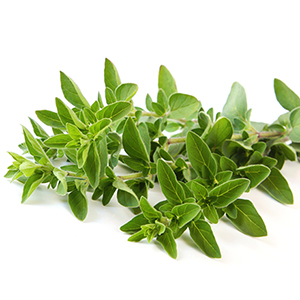- 4 Québec products to add to your recipes
- 10 Ways to Eat More Fruit Every Day
- Brighten up Your Plate with Citrus Fruit
- 12 Fresh Five-Star Salads
- Discover Hot and Sweet Peppers
- Eat More Nuts
- Enjoy Locally Grown Vegetables Year-Round
- Ways to Use Garden Vegetables
- Ketchups, Relishes, Chutneys, Marinades and Aromatic Vinegars
- Cranberries
- Cook with potatoes
- 8 Easy Recipes to Prepare Pumpkin—Differently
- Eat your veggies from the leaves to the roots
- Rediscover Fries!
- Super Salads!
- Eat more chickpeas
- Fruits and vegetables on the barbecue
- Apples on the menu
Summer Means Fresh Herbs

From basil to parsley through to chives, mint and thyme, fine herbs transform our sautés, salads and desserts into unexpected pairings. Get inspired.
Rich in antioxidants and a source of calcium, potassium and phosphorous, fine herbs deserve a place on our plates. Take advantage of the warm weather to cook with your favourite herbs, then store them for use all year long!
The art of conservation
1How to dry herbs
To dry them properly, gather the herbs in bunches and hang them in a dry, dark place, away from direct light. When the bunches are well-dried, store them in airtight containers.
Bay leaf, rosemary, chives, sage and thyme store well dried in sachets. However, some herbs like cilantro and tarragon don’t benefit from being crushed or ground as they lose most of their aromatic flavour.
The oil essences in herbs become concentrated during the dehydration process and drying actually enhances them. So use smaller amounts of dried herbs than fresh ones. The rule is simple: use one tablespoon of fresh herbs for one teaspoon of dried herbs.
2How to freeze herbs
There are two methods to freeze herbs effectively.
You can choose to put them in a freezer bag. It’s enough to simply wipe leaves with a damp cloth instead of washing them. Sort the herbs by type, and put them in resealable plastic bags before putting them in the freezer. Frozen herbs can be used in the same proportions as fresh herbs. Once thawed, unused herbs should be thrown out.
You can also chop up these aromatic plants and place them in ice cube trays filled with oil. Just toss an ice cube into the pan or pot to melt when you are ready to cook your meal. A simple idea that works well!
Mini lexicon of fine herbs
Dill
Storage:
Frozen
Goes best with:
Fatty fish like salmon, tuna and mackerel, creamy sauces, cucumber, beets, carrots, potatoes and hard-boiled eggs. It is also used in preserves, marinades and vinegars.
Handy tips:
Avoid boiling dill, or it loses its flavour. Only add it at the end of the cooking process to garnish.
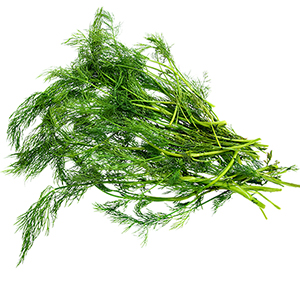
Basil
Storage:
Frozen
Goes best with:
Veal cutlets, poultry, rabbit, white fish, seafood, zucchini, red or yellow bell pepper, sweet onions, salads and pizza. Mozzarella, parmesan and tomato work well with its aroma.
Handy tips:
To keep the leaves in olive oil, remove the flowering ends otherwise the leaves can develop a bitter taste.
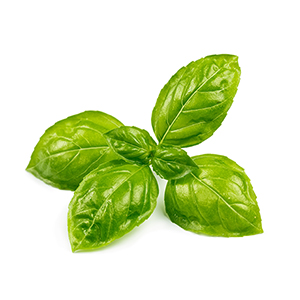
Chervil
Storage:
Frozen
Goes best with:
Scallops, lamb, soups, stews and omelets. The more daring take it with a salted waffle sprinkled with melted Emmental cheese.
Handy tips:
With its delicate aniseed flavour, chervil can easily replace parsley in any recipe.

Chives
Storage:
Dried or frozen
Goes best with:
Thick soups, quiches, veggie dips, tzatziki dips, omelets, salmon or trout cooked in foil as well as fresh cheese. You could even make a pesto with pine nuts, garlic and parmesan.
Handy tips:
To keep all the chives’ flavours, finely chop them with scissors, then place in a sealed container in the freezer.
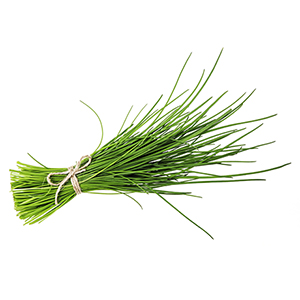
Coriander
Storage:
Frozen
Goes best with:
Raisins, couscous, brown rice, braised cabbage, stuffing, salads and sandwiches, soups and Asian and Mexican dishes. It also brings a touch of freshness to desserts with strawberries, mangoes or green apples.
Handy tips:
With its delicate aniseed flavour, chervil can easily replace parsley in any recipe.
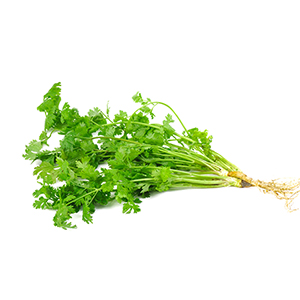
Tarragon
Storage:
Frozen
Goes best with:
Artichokes, carrots, potatoes, vinaigrettes, dressings and any dishes with mushrooms. You can also put tarragon under poultry skin before baking.
Handy tips:
Make a homemade tarragon vinaigrette by soaking four or five leafy branches of tarragon in a 1L of cider vinegar for a month. Stir it from time to time, filter, then voilà!

Bay Leaves
Storage:
Dried
Goes best with:
Patés, cold cuts, soups, tomato sauces, Provençal and Mediterranean specialties, such as ratatouille, stews, chicken, ham, or add to potatoes before cooking them in the oven. You can also slip a few leaves in a bag of rice for flavour before cooking!
Handy tips:
The more the bay leaf is cooked, the more fully it releases its aromas. Therefore, it pays to flavour dishes that require simmering or braising.

Mint
Storage:
Frozen
Goes best with:
Cucumber, peas, mushrooms, tomatoes, eggplant, pork, duck and especially lamb.. On the dessert menu, you’ll find it accompanying strawberries, citrus, watermelon and chocolate.
Handy tips:
To extend the life of the leaves, place the stems in a container of water in the fridge, and cover the leaves with a small plastic bag.

Oregano
Storage:
Dried or frozen
Goes best with:
Pizzas, tomato sauces, grilled meats, poultry, omelets, eggplant, Greek salad and feta cheese. Delicately flavour olive oil by adding one branch of oregano to the bottle.
Handy tips:
Oregano is marjoram’s little cousin! Though the first is known for its slightly sweet flavour, the two can easily be substituted for each other in recipes.

Parsley
Storage:
Dried, but ideally frozen
Goes best with:
Vegetables, stews, poultry, eggplant, tabbouleh, salads and seafood. On toast, fresh parsley with garlic butter and salt for a delightful light snack.
Handy tips:
Parsley is really an all-star herb! It enhances all your dishes without upstaging them. Add it to everything!

Rosemary
Storage:
Dried or frozen
Goes best with:
Slow-cooked stews, marinades, lamb, veal, sardines, mushrooms, onions and spinach. For dessert, it can perfectly boost apple pies or citrus salads.
Handy tips:
Use rosemary sparingly so you don’t mask the flavour of your foods.
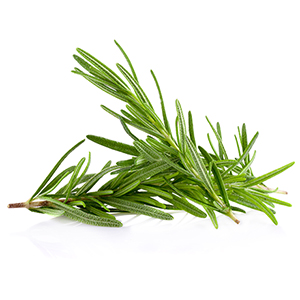
Sage
Storage:
Dried
Goes best with:
Pork, fish, stuffing, pasta, parmesan. Once sautéed in butter, sage becomes crispy and reveals a nutty aroma. You can even fry sage leaves in batter!
Handy tips:
Combine sea salt with freshly chopped sage for a delicious, aromatic homemade salt.
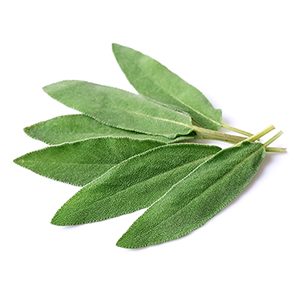
Thyme
Storage:
Dried or frozen
Goes best with:
Red meat, grilled or baked fish, tomato salad, green beans and peas. Sprinkle some on an apricot or plum tart to bring out the gorgeous flavours of the fruit!
Handy tips:
Slip a branch into the boiling water as you’re cooking vegetables to bring out their flavours.
